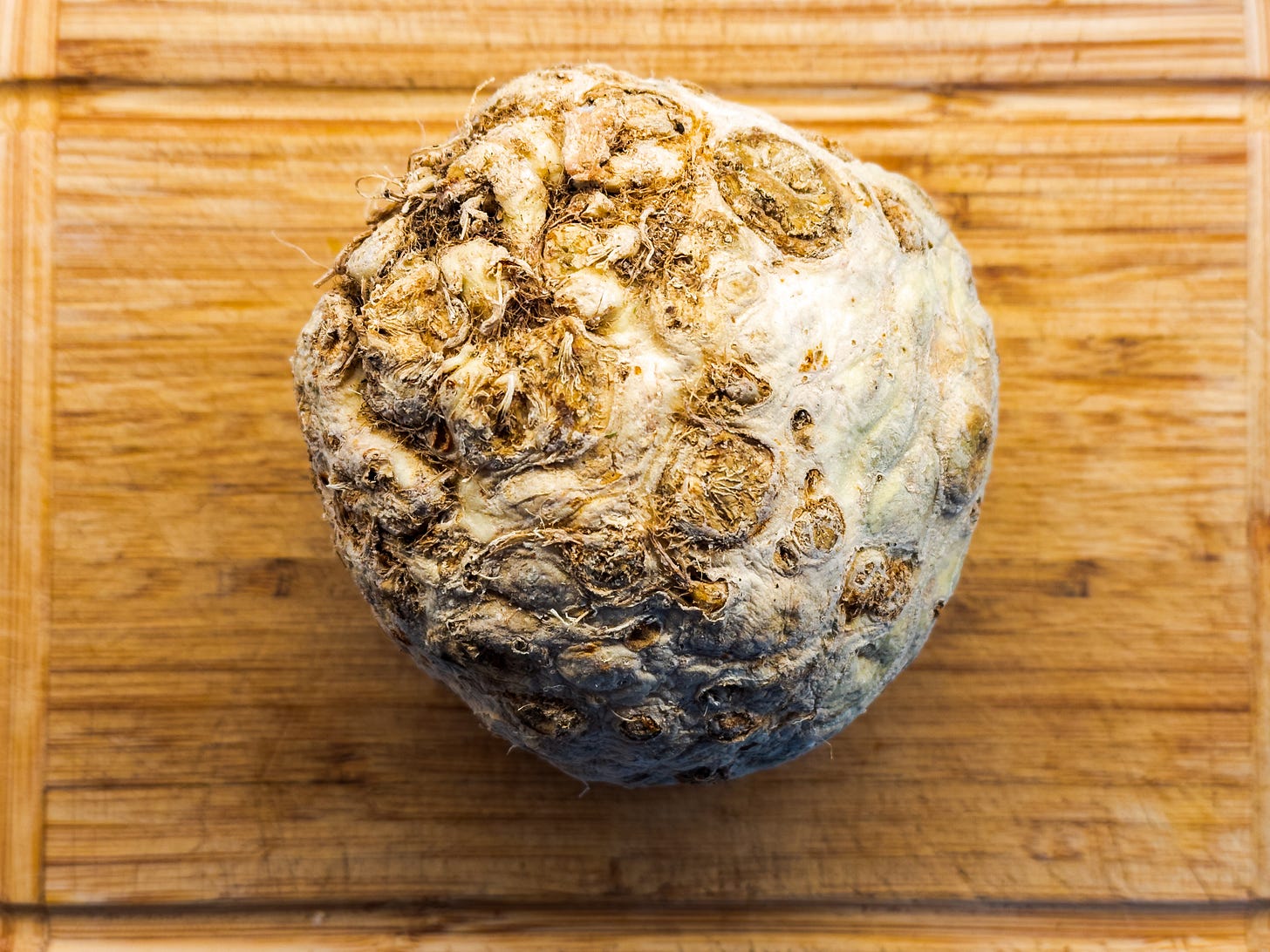Rooting for celeriac
How one misread shopping list sparked a root vegetable renaissance | 50+ Ways to love a celeriac | 3 recipes featuring celeriac
I was 31 years old when I first listened to Fleetwood Mac. I was in the West Country, UK, visiting Chris and Bethany with other friends. We spent hours cooking, talking about food and blogs, and eating, all while enjoying the music curated by Chris, a former DJ. I still remember the first time Dreams reverberated through the air: I was drinking tea from my mug, the spiced aroma of chickpeas and lamb filled the room, and I felt like I was finally living the life I had always wanted.
“And who’s singing now?” I asked Chris.
“Fleetwood Mac. How come you’ve never heard of them?”
“Never. It’s my first time. I love this music!”
In the months and years that followed, Fleetwood Mac became the soundtrack to my writing hours.
Moments of awareness like these are rare, but when they happen, they can change your life—and you never forget them. The first time I truly listened to Bruce Springsteen while driving to work, the first time I tasted curry, the first time I shelled fresh peas—their dull thud in the bowl still one of my most vivid acoustic memories—and the first time I read Laurie Colwin.
Now, I can add to that list: the first time I tried celeriac, at the age of 43.
I have a good excuse for being such a latecomer to the celeriac appreciation club. Celeriac isn’t one of the most common vegetables in Italy. In fact, it’s virtually unknown in the central and southern regions, while it’s slightly more familiar in the North, where it goes by the name sedano di Verona.
So, imagine my surprise when, a couple of weeks ago, Tommaso accidentally brought home a celeriac. He was at the supermarket with Livia (and I can only imagine the barrage of questions she was firing at him) when he absentmindedly misread the shopping list. Instead of picking up sedano (celery) and cime di rapa (turnip greens), he read sedano rapa (celeriac) and returned with this round, bumpy, brownish root. And now?
I posted a picture of my celeriac on Instagram and here on Substack, asking for advice on what to do with it. I expected just a handful of responses, mostly from friends. What I didn’t expect was to be showered with ideas, links, and an outpouring of enthusiasm—a true accolade to celeriac.
I hadn’t planned on writing a newsletter about celeriac, but with such an avalanche of suggestions, I felt compelled to record the moment. It also gave me the perfect excuse to dig deeper into the world of celeriac and try a couple of recipes that we ended up absolutely loving. In the end, I grew to love this humble, unassuming vegetable, capable of adding a light, elegant touch to any dish.
Celeriac is having its moment, much like beans and legumes in Italy.
Root vegetables have evolved from their role as humble staples of peasant cuisine to being celebrated in starred kitchens. They’re now appreciated by chefs who highlight their hearty, seasonal flavors and deep connection to the earth in sophisticated, refined dishes.
, in one of his recent newsletters, described a meal at La Tour d'Argent where he enjoyed slow-cooked eggs with a crust of toasted brioche breadcrumbs, accompanied by a sauce they called a “mousse” of roasted celery root, topped with black truffles. He adds:Root vegetables have taken off in Paris, which were often referred to as légumes oubliés, forgotten vegetables, and it’s nice to see they’re being fondly handled and remembered.
So here we are, connected to the season and the latest food trends, yet always looking back at what tradition has taught us in terms of pairing and preparations.
Here’s a curated list of the recipes I received—a collection for future reference and inspiration.
I plan to cook my way through these recipes over the next few years! Do you have any favorites that I missed? Let me know if you decide to try one of these ideas in your own kitchen—I’d love to hear how it turns out!




